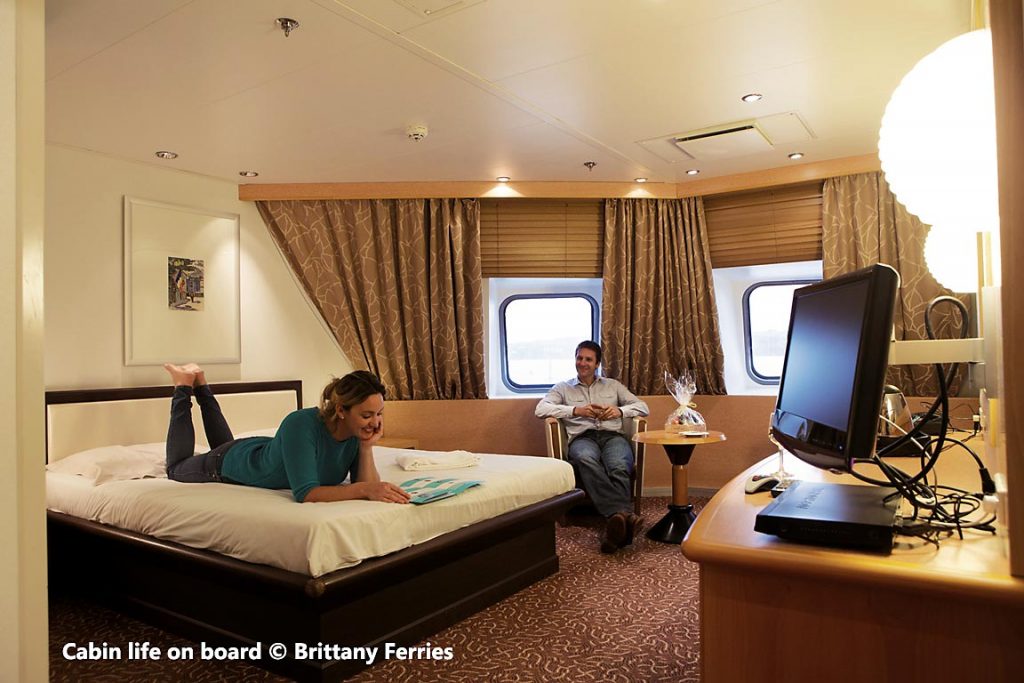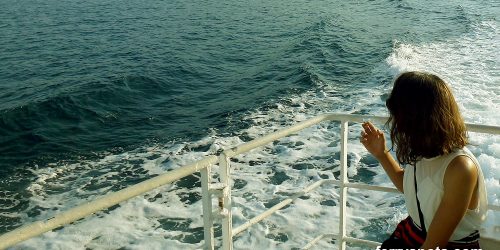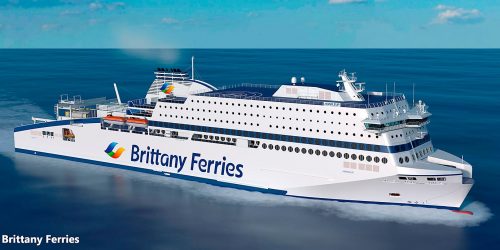Ferry Cabins
There is nothing better than arriving at your destination fully rested and refreshed for the journey ahead or for a day of sightseeing. Whether you need a cabin for an overnight journey or just to enjoy comfort and privacy during a longer daytime crossing, choosing a cabin on the ferry can be confusing. Here is what you have to know about ferry cabins:

On most modern ferries you will find a great range of onboard accommodation to choose from. From the deluxe cabin (like one on the above photo) to simple berth inside cabins. Cabins are designed for singles, couples or families and will be comfortable and will offer you the best travel experience on a ferry.
Ferry crossing accommodation, sleeping onboard, sleeping on a ferry is also available on reserved seating and cabin sharing, sleeping pods and reclining seats. For those with restricted mobility, there will be specially design cabins. There are options for every style and budget that will ensure your good night’s sleep or a daytime nap.
Cabin Types
The main two types of ferry cabins are outside and inside cabins sometimes called external and internal cabins.
Outside (External) Cabin
Outside or external cabin is situated either on the outside ferry deck or on lower decks but above the waterline (the line where the hull of a ferry meets the surface of the water)
As they are located above the waterline, these type of cabins feature natural daylight – they have windows or at least a window porthole.
Here is a short video of a typical basic outside cabin for 2 to 4 persons with a bunk style beds featuring a porthole window:
Inside (Internal) Cabin

Inside or internal cabin is with some exceptions, usually situated on lower ferry decks below the waterline (the line where the hull of a ferry meets the surface of the water).
As they are located below the waterline, these type of cabins does not feature natural daylight. Instead, they have air condition.
So this is the main difference in the nutshell – external cabins have windows while internal cabins do not. The size, layout and facilities are usually the same (depending on particular vessel).
Here is a short video of a typical basic inside cabin for 2 persons with a bunk style beds without any windows:
Deluxe cabins:
Some ferries offer deluxe cabins that also have balconies (as on below photo) where you can feel the real sense of space – large double beds, wardrobes, balconies with sea views, one suite facilities, and all other details you would expect to find in the most luxurious hotels.

Cabin Facilities
On most of the ferries, you will find in your cabin everything you need for a comfortable journey: sheets, towels, soap and shower gel.
On some ‘economy’ ferry crossing, the cabins will have just fresh linen and towels.
Apart from beds, most of the cabins nowadays also have private WC with shower while on some older ferries you will still find cabins that offer just shared facilities. It is also very unlikely that you will find nowadays inside cabins without air conditioning.
You will also find plug socket in your cabin to use or to charge any electrical appliances that you may have like smartphone, tablet, laptop etc.
The ferry cabin layout
Depending on the number of people to accommodate, ferry cabins will have different layouts.
The most common layout is a galley type of cabin that has two or four bunk beds on opposite walls with a window in between them (see above video). As soon as you enter into the cabin, you will have bunk bed on left and another on the right side.
Most cabins will have en suite bathrooms with shower, usually on the left or right side of the main cabin door. Some older ferries have shared bathrooms so their cabin has a simpler layout.
Prices
Prices for ferry cabins are based on facilities and crossing times.
Cabins on the daytime crossing are usually cheaper than on overnight crossings. Ferry companies offer cabins on the reduced rates during daytime as demand is lower than for a night.
Still, having a cabin during your daytime crossing will give you the advantage to relax and have a nap. This may be particularly important if you travel with children, babies or elderlies.
Booking your ferry cabin – what is berth?
When you try to book a cabin on most of the ferry booking sites you will see terms like “2-berth cabin” or “4-berth cabin”. Berth simply means bed! So 2-berth means 2-bed cabin and so on.
Pet-Friendly Cabins
Dog-friendly cabins on ferries are becoming more like a standard offer nowadays. These type of cabins feature pet-friendly laminate flooring. Usually, pet-friendly cabins are located in a dedicated area on the ship.
Having a cabin while travelling by pet is an excellent idea as this gives you a safe place to accommodate your dog during your crossing.
Here is a short video of pet-friendly cabin:
When to vacate a cabin?
You will be asked to vacate your cabin usually about 30 to 40 minutes prior to arrival in the port. Listen to the announcement and get ready when asked.
Check out from the cabin on ferries is usually set a bit early due to the fact that you need to prepare for disembarkation and the crew has to clean and prepare the cabin for next check-in for the following departure.

More FAQ and other ferry tips



